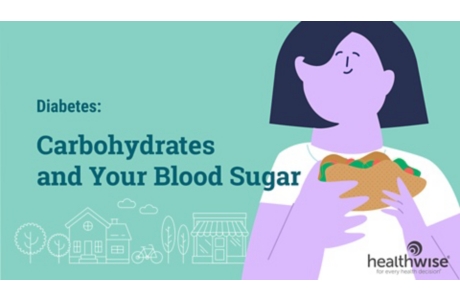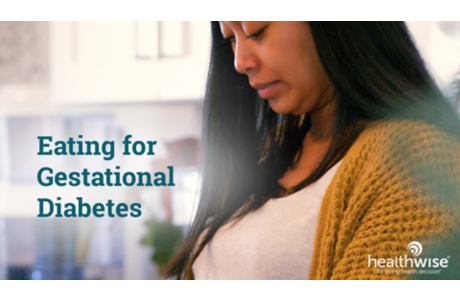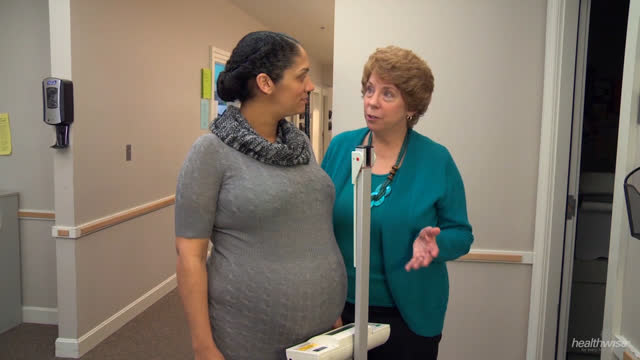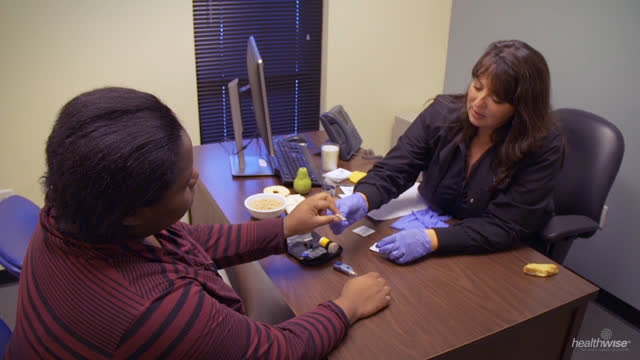Overview
You may not have low blood sugar (hypoglycemia) when you have gestational diabetes. But you are at risk for low blood sugar if you take insulin shots or some diabetes medicines. Low blood sugar may happen if you:
- Skip meals or don't eat enough.
- Are more active than usual.
- Take too much insulin.
- Take too much diabetes medicine in one day.
Checking your blood sugar helps you feel more in control of diabetes during pregnancy. It helps you treat low or high blood sugar before it becomes an emergency. It also helps you know how exercise and food affect your blood sugar.
How to deal with low blood sugar emergencies
Being prepared
Follow these steps to help prevent low blood sugar.
- If possible, use a continuous glucose monitor (CGM).
This is a useful tool to help predict when your blood sugar is getting too low.
- Keep some quick-sugar foods with you at all times.
- Choose foods that contain fast-acting carbohydrate. At home, you may have fruit juice or table sugar on hand.
- Carry hard candy or glucose tablets when you are away from home.
- Know the symptoms of low blood sugar.
They include sweating, blurred vision, and confusion. Always carry a list of the symptoms with you.
- Check your blood sugar often.
- This is the best way to know if your blood sugar is low. If you've had diabetes for many years, you may not have symptoms until your blood sugar is very low.
- Do not drive if your blood sugar level is less than 70 mg/dL.
- Wear medical identification at all times.
Wearing a medical alert bracelet or necklace is important in case your blood sugar drops very low and you need help.
- Teach your friends, family, and coworkers about low blood sugar.
- Be sure they know the symptoms of low blood sugar. Post a list of the symptoms at home and at work.
- Show them how to check your blood sugar if you can't check it yourself. Keep the instructions for your blood sugar meter with the meter.
- Tell them what to do in case your blood sugar becomes very low. Post emergency care instructions at home and at work.
- If you take insulin, always carry glucagon with you.
Be sure your family, friends, and coworkers know how to give glucagon.
Treating low blood sugar
Symptoms of low blood sugar include sweating, trembling, lightheadedness, and confusion.
- Check your blood sugar.
-
Check anytime you think your blood sugar may be low.
- Adults use the "rule of 15."
-
If your blood sugar is low:
- Eat about 15 grams of carbohydrate from quick-sugar food, like glucose tablets. Children usually need less than 15 grams of carbohydrate. Ask your doctor or diabetes educator about the right amount for your child.
- Wait about 15 minutes after eating quick-sugar food. Check your blood sugar again.
- If blood sugar is still below 70 mg/dL, eat another 15 grams of carbohydrate from quick-sugar food.
- Repeat 15 grams of fast-acting carbohydrate every 15 minutes until your blood sugar is in a safe target range, such as 70 mg/dL or higher.
- Know when to get help.
-
Get help right away if your blood sugar stays below 70 mg/dL or you're getting more sleepy and less alert.
Credits
Current as of: October 2, 2023
Author: Healthwise Staff
Clinical Review Board
All Healthwise education is reviewed by a team that includes physicians, nurses, advanced practitioners, registered dieticians, and other healthcare professionals.
Current as of: October 2, 2023
Author: Healthwise Staff
Clinical Review Board
All Healthwise education is reviewed by a team that includes physicians, nurses, advanced practitioners, registered dieticians, and other healthcare professionals.







